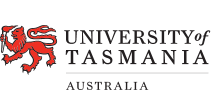
Rural–urban interfaces are areas of high-risk exposure to fire. This project will explore the changing characteristics of vegetation in disturbed areas in the rural–urban interface, and improve our understanding of extreme fire behaviours in fragmented interface fuels (patch and corridor).
A knowledge sharing forum for this project, titled 'Bushfire risk at the rural–urban interface: improving fire risk assessment at the urban edge', was hosted on Wednesday 10 December 2025.
Watch the webinar replay below.
The area between suburbs and bushland are especially vulnerable to bushfire destruction, which is often economically devastating. This frontier, known as the rural-urban interface, is an area of constant change in both the demographic composition and the progressive expansion of the urban interface in many locations, particularly in southern Europe, western North America and southern Australia. This constant change makes the effective mitigation of risk and management of fire in those regions challenging.
The vulnerability of rural-urban interface housing reflects a constellation of socio-ecological factors, such as ignitions from human sources, ineffective and costly fuel treatments, poor planning and building regulation, and limited community understanding of and preparation for bushfires. The scope and scale of these issues have become clearly apparent in the NSW Bushfire Inquiry and the national Bushfire Royal Commission.
Rural-urban interfaces are areas where people and infrastructure face high and increasing fire-risk exposure. To identify the most urgent research priorities in the rural-urban interface, a targeted survey and workshop was facilitated by the Centre in June 2022. The participants included key emergency management stakeholders from across Australia with responsibility to directly reduce risk across the rural-urban interface. While a number of research areas were discussed, the group agreed that an interdisciplinary and integrated research project that furthered the understanding of the following three key areas was the priority:
- community-centred/led risk reduction at the rural-urban interface
- bushfire behaviour in interface vegetation
- effective and innovative mitigation strategies for the rural-urban interface.
This project seeks to progress our understanding of how we can reduce risks at the rural urban interface through an integrated interdisciplinary project.
Researchers are combining geospatial data from bushfire disasters, biophysical assessment of fire risk in bushland interface and gardens and social research to understand community perceptions of fire risk, attitudes to fuel managements and barriers to creating fire-safe communities.
The research will:
- develop decision-support tools for estimating risk of fire disaster and house loss
- evaluate the effectiveness and social acceptability of interventions to reduce bushfire risk at landscape to garden-scale
- identify barriers to diverse community groups who want to use fire to manage fuels
- develop and test educational materials designed to drive individual and community bushfire adaptation.
| Year | Type | Citation |
|---|---|---|
| 08/2024 | Journal article | Garden design can reduce wildfire risk and drive more sustainable co-existence with wildfire |
| 10/2023 | Journal article | Taming the flame, from local to global extreme wildfires |
| 09/2024 | Journal article | Social and health factors influence self-reported evacuation intentions in the wildfire-prone island of Tasmania, Australia |
| 09/2025 | Journal article | Where the landscape meets the garden gate: fire risk perception and garden adaptation in Tasmania’s wildland–urban interface |
| 11/2022 | Journal article | Neighbourhood bushfire hazard, community risk perception and preparedness in peri-urban Hobart, Australia |
| Date | Type | Title |
|---|---|---|
| 3 May 2023 | Workshop material | 2023 Natural Hazards Research Forum workshop slides: Stream 1, Workshop 3 |
| 14 May 2024 | Presentation | Anna Marie Gjedrem & Stefania Ondei - 2024 Natural Hazards Research Forum presentation |
| 14 March 2025 | Audio-video | Bushfire risk at the rural urban interface and the Los Angeles fires: presentation |
| 19 June 2025 | Presentation | Anna Gjedrem - Natural Hazards Research Forum 2025 presentation |
| 19 June 2025 | Presentation | Grant Williamson - Natural Hazards Research Forum 2025 presentation |










